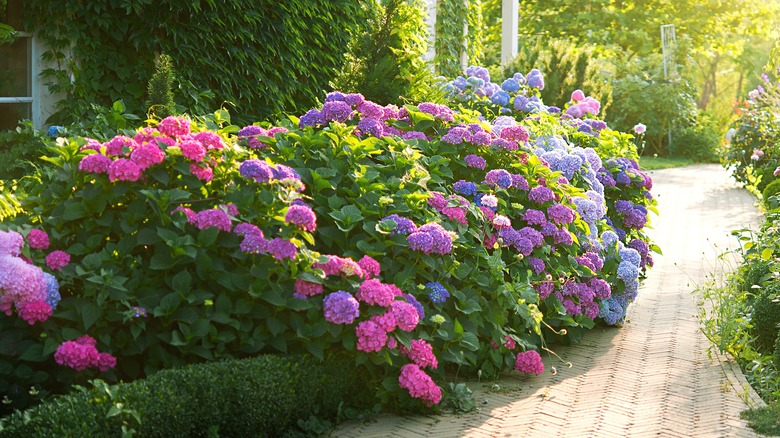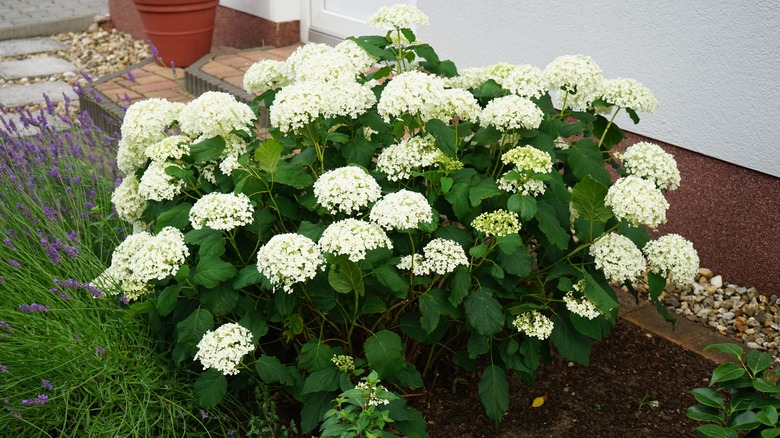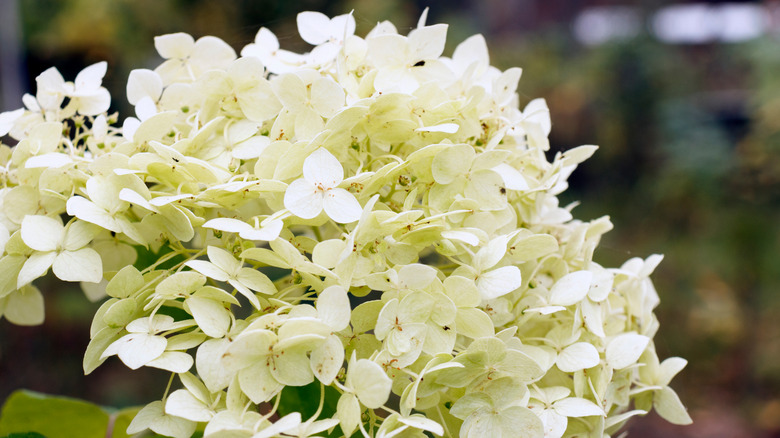The Refreshing Hydrangea Variety That Will Thrive In Your Partially Shady Yard
If you ever look out at your yard and wish that it had more vibrant colors in it, you may have thought about growing hydrangeas. These stunning flowering shrubs can add a lot of color to your yard. Unfortunately, many hydrangea varieties prefer full or at least partial sun and aren't ideal for yards that are full of shade. While you may think that you'll need to opt for other flowers you'll adore if you love hydrangeas, don't give up hope just yet. There are a few varieties of the shrub that do very well in the shade.
The smooth hydrangea (Hydrangea arborescens) is one variety that is very shade-tolerant. Smooth hydrangeas aren't too finicky and will grow well in a yard without much sunlight, so they can be a great solution for adding a bit more vibrance to your property. Although smooth hydrangeas are traditionally white, there are many more color options available these days. The Invincibelle Sublime Smooth Hydrangea has bright green blooms and is a particularly great choice if you need to liven up a shady spot in your yard. Other varieties come in pinks, purples, and reds. Although these are easy to grow, however, you'll want to consider a few things to make sure you'll get the most out of this gorgeous shrub.
The right growing conditions for smooth hydrangeas
Because the Invincibelle Sublime Smooth Hydgrangea isn't too fussy, like other hydrangeas, it's pretty easy to grow and take care of. However, it needs to be grown in the right conditions for best results. You'll find that this hydrangea can grow well in USDA zones 3 through 9. Your buds will fare fine in cold conditions, so you won't have to worry too much once the winter rolls around. As mentioned, this plant prefers partial shade, which amounts to between two and six hours of sunlight each day. However, it can also grow well in full sun if necessary, if it gets a sufficient amount of moisture. It can also grow well with an even lower amount of sunlight. Excessive shade won't harm its growth.
Once it takes root and gets settled, smooth hydrangeas can grow well in dryer conditions, if it's not too sunny. However, it needs quite a bit of water – particularly when it's first getting established and during budding and blooming. Water will allow the plant and its blooms to grow larger. Keep in mind that it also isn't too particular about soil — just about any soil will do as long as it's well-drained. Space these hydrangeas at least 4 or 5 feet apart to avoid the plants competing and overlapping.
Getting the most out of smooth hydrangeas
To get the most out of your smooth hydrangeas, prune the plants each year. Smooth hydrangeas bloom on new growth. Ideally, you'll want to prune the plant to the ground or to at least a third of its height early in the spring. While you can do this in the fall or winter instead, doing it in the spring will allow the blooms to remain in place and continue livening up your yard throughout the fall and winter seasons. If nothing else, you'll want to remove any damaged stems that you notice in the early spring. Propagation of the plant is also possible and is easy to manage. You'll simply need to get a stem or root cutting or propagate by seed or layering.
Another thing to be aware of when managing and maintaining this shrub is that it's possible for it to suffer from disease. Potential problems include bacterial and fungal leaf spot, root rot, powdery mildew, and botrytis blight, so watch out for these. Pests aren't too much of a problem with this shrub, but that doesn't mean there aren't pests that can destroy your hydrangeas. This includes deer as well as aphids, mites, and nematodes. In particular, the hydrangea leaf tier is one pest that could cause a lot of damage, so be aware of this and keep an eye out for the telltale sign of stuck-together leaves, which evidences leaf tier larvae.


